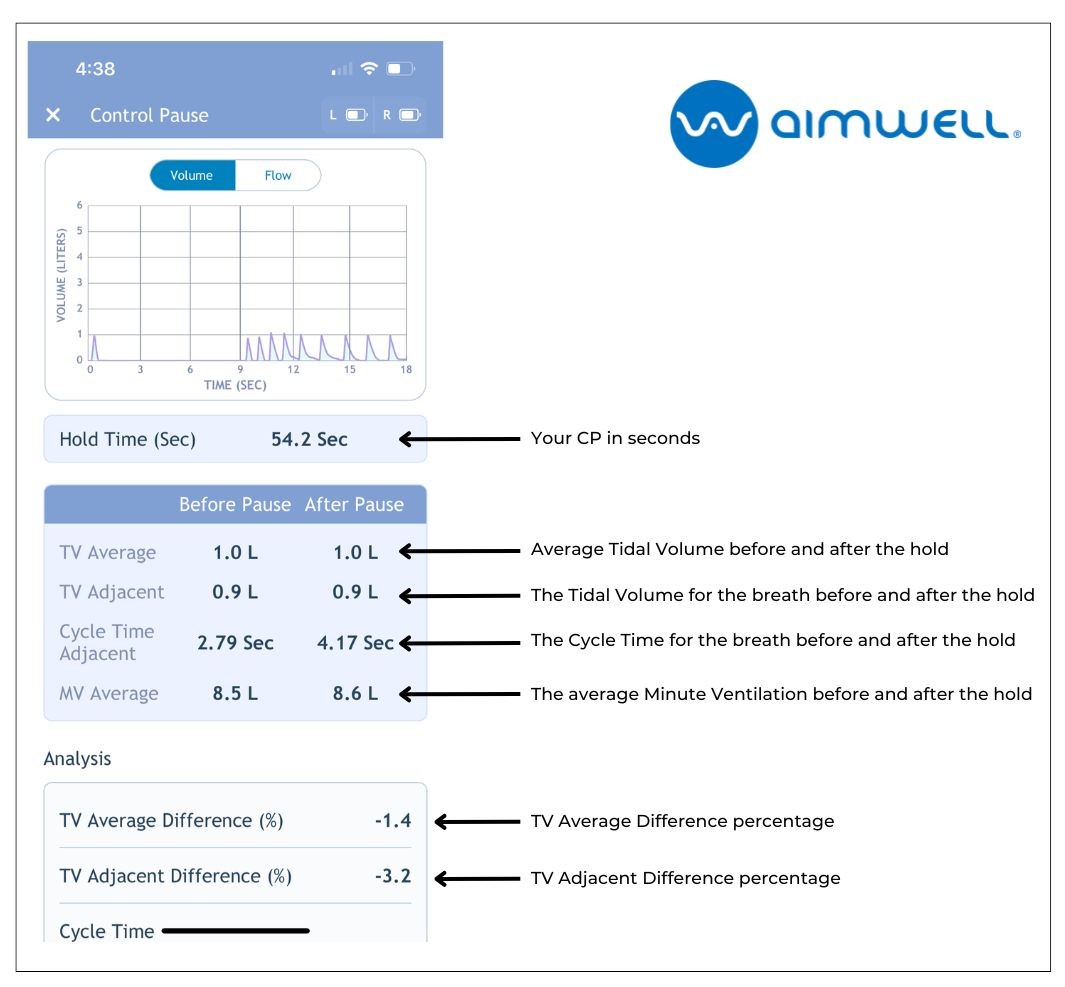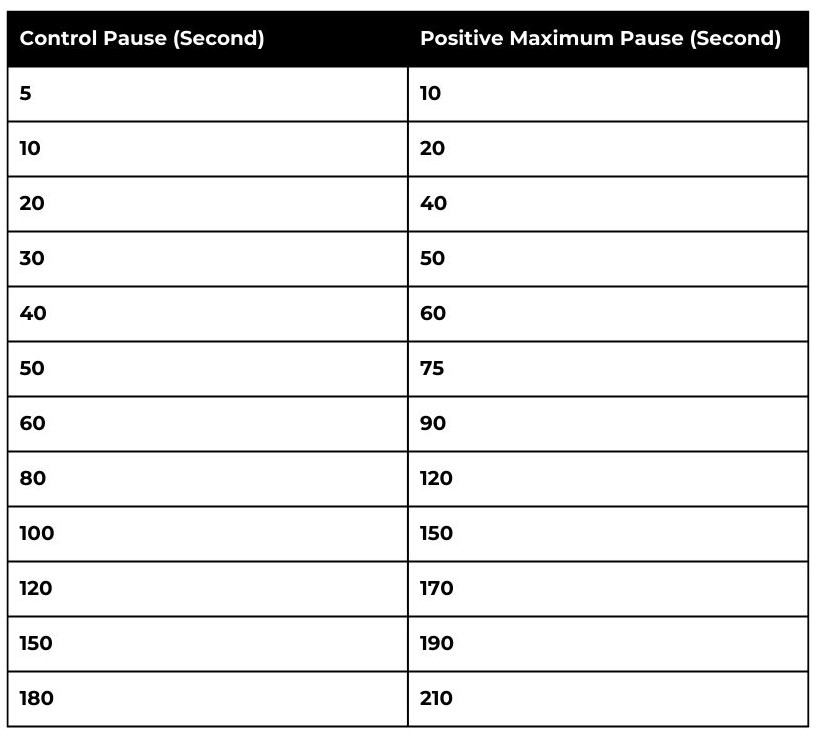How is Control Pause normally measured?
If you have been practicing Buteyko Breathing, you may measure the Control Pause (CP) daily or even multiple times per day.
Indeed, CP is the most important parameter to measure in the Buteyko Method.
According to Dr. Buteyko, the Control Pause or the Buteyko-defined breath-hold time is an accurate and sensitive parameter that normally reflects the tissue oxygenation level in the body at rest.
Research has also indicated a good correlation between CP, minute ventilation, and CO2 level in the body, the three important breathing health metrics, such that if we know one of them, the other two can be more or less correlatedly estimated.
To measure CP correctly, according to the Buteyko Method, do the following:
- Sit down comfortably with a straight back and all body muscles relaxed, including your breathing muscles.
- Breathe normally and calmly for 5 minutes – do not breathe more than you need to.
- Then obtain a watch, breathe in and out normally, and at the end of the exhalation, pinch the nose and start the timer.
- Keep the nose pinched until the first distinctive urge to breathe, then stop the watch immediately, and the time recorded is the CP. The first such desire often comes with an involuntary and distinctive push of the diaphragm or a pulsing movement in the throat.
- The first few breaths immediately after the CP should be similar to the breath before the CP.
How does AYO BT+ help measure Control Pause easily with confidence?
The challenge or tricky bits of performing the CP test following the above guide include some uncertainty about what exactly ‘breathe in and out normally’ is before the breath-hold, how distinctive the urge to breathe at the end of the breath-hold, how to determine if the breaths after the hold are similar to those before the hold. To do all these properly is quite challenging for us humans. We need some tools to help us here.
AYO BT+ Breathing Measurement and Exerciser is designed to measure breathing while performing breathing exercises, and one of its featured exercises in its App is dedicated to measuring Control Pause – a great tool to automate the measurement process and aid Buteyko Reduced Breathing training.
The Control Pause test can be done with either an AYO BT+ Boost, Essential, or Lite as follows:
- If you use a Boost, connect the L Module on the Left side of the mask, and the E Module on the right side of the mask, then connect the BTo module at the back of the right-side module. Optionally, you can also connect the BTi module at the back of the left-side module for inhalation resistance adjustment.
- If you use an Essential or Lite, connect the BTo module on the left side of the mask, and the E Module or L Module on the right side of the mask.
- Power on and wear the device, then open the App.
- Select “Control Pause” in the “Featured “screen in the App.
- The test starts with 5 minutes of relaxed breathing, and when the time is up, the App will instruct you to have a normal inhalation, then at the end of a relaxed exhalation hold your breath.
- Once you stop the hold and start breathing, you will need to breathe for another minute before the App provides the hold time and the capture of breathing waveforms and data before and after the hold for your review.
- The captured CP data can be saved on your mobile for later viewing.
Note: you can’t pinch your nose when wearing the BT+, however, there is no need to, as if you breathe even slightly, the BT+ will sense it and stop the test immediately.

To determine if you performed the CP test correctly, the key is to make sure:
- The TV adjacent before the hold is similar to the TV Average before the hold.
- The TV Adjacent after the hold is similar to the value before the hold.
As a rule of thumb, the TV Adjacent after the hold should not be 10% more than that before the hold. If it is, your hold is a bit too long.
If the TV Adjacent after the hold is noticeably smaller than that before the hold, you may have stopped a bit too early, and you can try to hold a bit longer next time.
By measuring like this for some time, you will develop a more accurate sense or feel about what it means to ‘breathe in and out normally” before the hold, the “first distinctive urge to breathe”, and what kind of breath after the hold can be qualified as similar to or not more than 10% of the breath before the hold.
To practice and progress successfully with Buteyko Reduced Breathing, it is important to measure your CP correctly, and AYO BT+ is the first and only tool to date to help achieve it.
How does AYO BT+ help determine if a Positive Maximum Pause is correctly performed?
Positive Maximum Pause (PMP) is another way to measure breath-hold in the Buteyko Method. In fact, Dr. Buteyko mostly used PMP for his work.
PMP is defined as the maximum length of time you can hold your breath comfortably, and on resumption of breathing force your breathing into the pattern of breathing you had before the breath-hold.
Breathing after PMP is heavier compared with a normal CP, so it is harder to determine if the breath is well-controlled as expected without a tool. For this reason, the BT+ App continues to measure your breathing for 1 minute after you resume breathing, such that even if you can manage the first breath low but fail to control any breaths after that, the measured waveforms can clearly show that as an indication of over-hold.
As an example, the above reference CP screen capture shows well-controlled breaths after the hold, indicating an acceptable PMP measurement.
The following table gives the relationship between CP and PMP:

